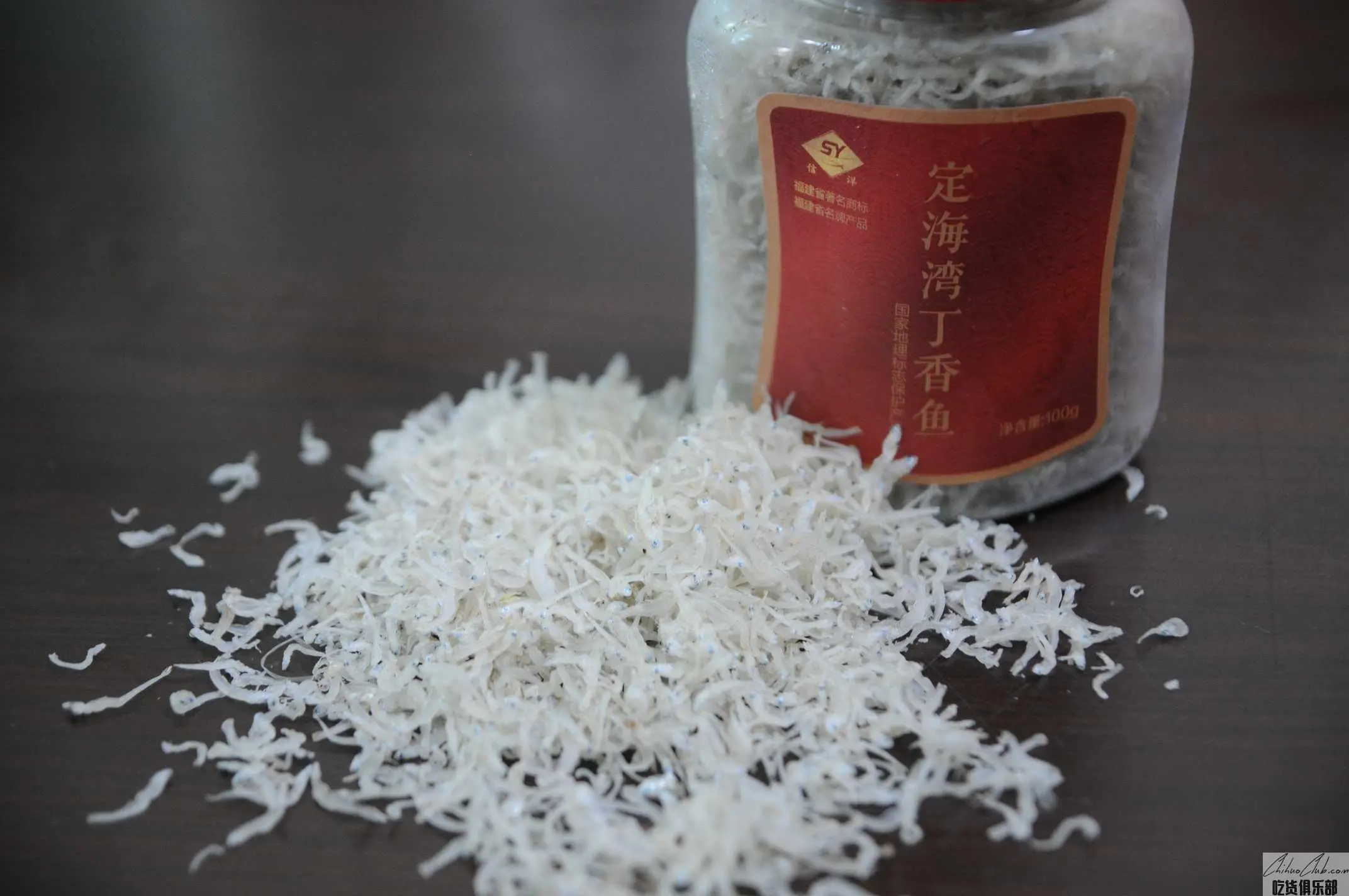
Ding bay clove Fish
-
Update date::
-
Date of protection::
-
Protected range:The origin of Dinghai clove fish is the administrative area and the sea area of Dingjiang Town, Lianjiang County, Fujian Province, with a latitude of 26°19′ to 26°28′ north and an east longitude of 119°85′ to 119°71′.
-
Related origin:
-
Category:
The name of the clove fish, Engraulis japonicus, is a larvae of Japanese cockroaches. It is round and flat, and is 2 to 3.5 cm in length. Good luster, translucent, white or blue-white, Dinghai Bay is located in the salty and light border area of the Minjiang River and the Lancang River fresh water and the East China Sea. The water quality, slow flow rate, water temperature and weak wind are not only suitable for lilac. The fish inhabits, and the clove fish produced in this sea area has the advantages of sweet taste, moderate saltiness, delicious meat quality, high purity, no impurities, no breakage, and rich nutrition.
Ding bay clove fish is a warm water pelagic fish, suitable for growing water temperature of 14 ° C ~ 24 ° C, often inhabited in water-clear waters, islands and adjacent sea areas, hi shadows strong light, fish often around the light source for a swirling swim. Staple food plankton. Ding bay clove fish dense area is mostly formed in the cold water or warm water tongue front area with the most optimal temperature level gradient, which is closely related to the horizontal gradient of flow system and temperature. History of clove fish According to "Lianjiang County", it contains: clove fish, distributed in the waters of the Huanghua Peninsula, especially in the Dinghai Bay, during the prosperous period of "Qingming" to "Lixia", a small body fat, white as snow, fresh and delicious. According to the "Fujian Zhi? Aquatic Records", clove dried fish is one of the province's famous aquatic products. The nutritional value of clove fish Dingxiang clove fish is rich in a large amount of enoic acid (PHA) and mannose acid (EPA), of which the EPA content reaches 29.1 mg / kg. These two unsaturated fatty acids have been reported to have a special effect on the prevention and treatment of diseases of the cardiovascular system. The fat-soluble VA and VE play an important role in preventing cancer, anti-cancer and delaying aging. Ding bay clove fish can be eaten directly, but also a condiment of other seafood. When serving, use it to make soup, mix cold dishes or scrambled eggs, etc., the smell is tangy, Shengjin appetizer. The development prospect of clove fish Fujian Lianjiang Dinghai clove fish is a valuable seafood. It is widely praised for its sweet taste, moderate saltiness, delicious meat quality, high purity, no impurities, no breakage, and nutrient-rich. In 2008, the production of Dingxiang clove fish reached 1,600 tons, with an output value of nearly 150 million yuan. March and April each year is the prosperous period of Dingxiang clove fish. The processed products are mainly exported to the United States, Japan, Taiwan, Southeast Asia and other countries and regions.
Technical requirements for the quality of Ding bay clove fish (1) Sea environment. 1. Water temperature: 11.2 ° C to 27.1 ° C. 2. Seawater salinity: 22.1‰ to 32.7‰; pH 7.6 to 8.4. 3. Flow rate: 0.6m/s to 2.9m/s. (2) Fishing technology. 1. Fishing methods: purse seine fishing. 2. Fishing time: April to October every year. (3) Processing technology. 1. Processing process: raw material selection→cooking→cooling→drying→wind selection→manual selection→metal detection→packaging→packing→freezing storage 2. Key requirements: (1) Raw material selection: produced in the sea area of Dinghai Bay, The fish body is fresh, complete in shape, free of impurities, and the size does not exceed 30mm. It cannot exceed 2 hours from fishing to processing. (2) Cooking: After the raw materials are washed, they are cooked with 3% concentration of 100 ° C brine for 2 to 3 minutes until the fish is cooked but not bad. (3) Cooling: The clove fish are air-cooled for 10 to 15 minutes after cooking, and the fish body is quickly lowered to room temperature. (4) Drying: drying temperature is about 75 °C, drying time is 30 minutes to 60 minutes, until the fish body moisture reaches 40% to 45%. (4) Quality characteristics. 1. Sensory characteristics: The project requires good luster, translucent, white or blue-white tissue and shape muscles are elastic, the individual size is uniform, no other aquatic inclusions, the complete rate is ≥95%, no dry taste and smell. Fresh scent, no odor 2. Physical and chemical indicators: project index moisture (%) ≤ 43 salt (%) ≤ 7 protein (%) ≥ 40 fat (%) ≤ 53. Safety and other quality technical requirements: product safety and other quality Technical requirements must comply with relevant national regulations.
Apply to:
Producers within the scope of the production of clovefish in Dinghai Bay may apply to the Lianjiang County Quality and Technical Supervision Bureau of Fujian Province for the use of the \"Special Mark for Geographical Indication Products\", which is reviewed by the Fujian Provincial Bureau of Quality and Technical Supervision and reported to the AQSIQ for approval. Announced. The statutory testing agency for Dinghai clove fish is designated by the Fujian Provincial Bureau of Quality and Technical Supervision.